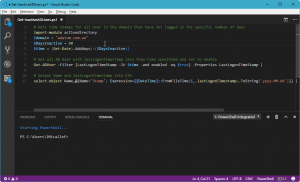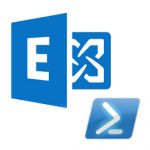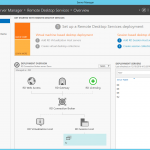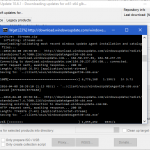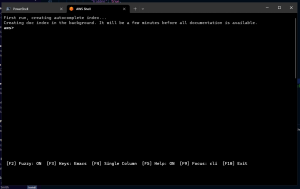 I am a fan of Windows Terminal and some of the recent things Microsoft seem to be doing for SysAdmins. I like having all the tools I need in a single spot. Adding the AWS CLI is fairly straight forward but makes life a heap easier. Start by installing Python from python.org if you don’t already have it on your machine. Once installed (take note of the version, which as of publishing is 3.11) open up Windows Terminal.
I am a fan of Windows Terminal and some of the recent things Microsoft seem to be doing for SysAdmins. I like having all the tools I need in a single spot. Adding the AWS CLI is fairly straight forward but makes life a heap easier. Start by installing Python from python.org if you don’t already have it on your machine. Once installed (take note of the version, which as of publishing is 3.11) open up Windows Terminal.
Now let’s install AWS Shell using Python, enter the following command
pip install aws-shell
once that completes we will need to locate the aws-shell executable, for quick reference it resides under the user profile like follows Note that Python311 will change depending on the version you have installed.
C:\Users\John\AppData\Local\Programs\Python\Python311\Scripts\aws-shell.exe
We can also use PowerShell to quickly search for it using the following command
(Get-command aws-shell).Path
Now that we have the location, we can begin to configure Windows Terminal. Go into settings from the drop-down menu and under the Profiles section, select Add a new Profile now drop down pick a console that you like and let’s duplicate it (we’ll use PowerShell).
Under Name, enter a better name, such as AWS Shell. For Command Line, enter the path of the aws-shell executable we found earlier. Starting Directory is fine as-is (it isn’t really used). For an icon, you can grab it from this file aws_icon.zip , paste it into the same location as aws-shell and browse to it. You can also customise the appearance and add a background image or change colours as you see fit. You can see an example JSON profile here.
{
"name": "AWS Shell",
"commandline": "C:\\Users\\John\\AppData\\Local\\Programs\\Python\\Python311\\Scripts\\aws-shell.exe",
"icon" : "C:\\Users\\John\\AppData\\Local\\Programs\\Python\\Python311\\Scripts\\aws-logo.ico",
"acrylicOpacity" : 0.90,
"fontFace": "Consolas"
}
If you decide that you need to edit the JSON file directly, keep in mind that you need to escape special JSON characters, which includes a backslash. You need to escape a single backslash with double backslash.
